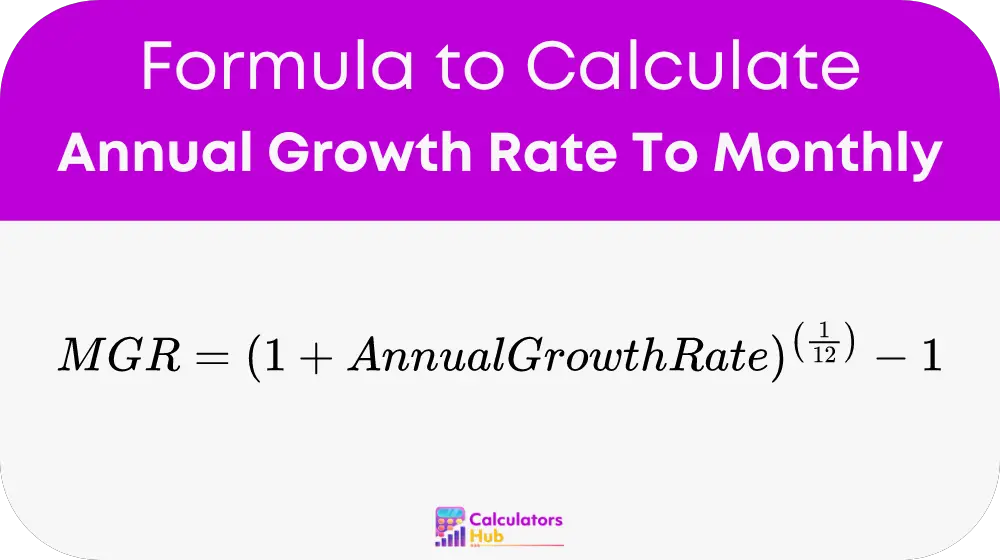The Annual Growth Rate to Monthly Calculator is an essential tool for investors, business owners, and financial analysts. It allows users to transform annual growth rates into more frequent, monthly insights, aiding in finer, more consistent financial tracking and planning. This conversion is crucial for aligning long-term growth expectations with monthly budgeting and performance evaluation.
Formula
To accurately convert an annual growth rate to a monthly growth rate, use the formula:

Steps for Calculation:
- Add 1 to the Annual Growth Rate: This adjusts the growth rate for compounding over the period.
- Take the 12th Root: By raising the result to the power of 1/121/121/12, we effectively distribute the annual growth evenly across each month.
- Subtract 1: This final step recalculates the figure back into a growth rate format.
Table of General Terms
To assist users in understanding and utilizing the calculator, here is a table of common terms associated with growth rate calculations:
| Term | Definition |
|---|---|
| Annual Growth Rate | The percentage increase or decrease over a year, expressed as a decimal. |
| Monthly Growth Rate | The equivalent monthly percentage change reflecting the annual growth rate. |
| Compounding | The process of generating earnings on an asset’s reinvested earnings. |
Example
For instance, if a business experiences an annual growth rate of 6% (expressed as 0.06 in decimal form), the monthly growth rate would be calculated as follows:
Monthly Growth Rate = (1 + 0.06)^(1/12) – 1 ≈ 0.004867
This translates to a monthly growth rate of approximately 0.487%, which when multiplied over 12 months, compounding monthly, achieves the annual rate of 6%.
Most Common FAQs
This conversion allows businesses and investors to monitor their growth and adjust strategies on a more frequent basis, ensuring closer alignment with annual goals.
Compounding takes into account the effect of growth accumulated each month, which contributes to the total annual growth in a way that simple division does not capture.
Yes, the formula works universally for any growth rate, as long as it’s properly formatted and annual compounding is assumed.